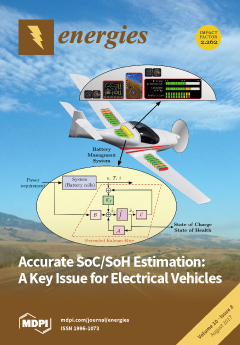The growing environmental challenge of electrical energy systems has prompted a substantial increase in renewable energy generation. Such generation systems allow for significant reduction of CO
2 emissions compared with a traditional fossil fuel plant. Furthermore, several improvements in power systems network configuration
[...] Read more.
The growing environmental challenge of electrical energy systems has prompted a substantial increase in renewable energy generation. Such generation systems allow for significant reduction of CO
2 emissions compared with a traditional fossil fuel plant. Furthermore, several improvements in power systems network configuration and operation combined with new technologies have enabled reduction of losses and energy demand, thus contributing to reduction of CO
2 emissions. Another environmental threat identified in electrical networks is the leaking of insulating sulfur hexafluoride (SF
6) gas used in electrical gas insulated substations (GIS) and equipment. Because of its Global Warming Potential (GWP) of nearly 24,000 and its long life in the atmosphere (over 3000 years), SF
6 gas was recognized as a greenhouse gas at the 1997 COP3; since then its use and emissions in the atmosphere have been regulated by international treaties. It is expected that as soon as an alternative insulating gas is found, SF
6 use in high-voltage (HV) equipment will be banned. This paper presents an overview of the key research advances made in recent years in the quest to find eco-friendly gases to replace SF
6. The review reports the main properties of candidate gases that are being investigated; in particular, natural gases (dry air, N
2 or CO
2) and polyfluorinated gases especially Trifluoroiodomethane (CF
3I), Perfluorinated Ketones, Octafluorotetra-hydrofuran, Hydrofluoroolefin (HFOs), and Fluoronitriles are presented and their strengths and weaknesses are discussed with an emphasis on their dielectric properties (especially their dielectric strength), GWP, and boiling point with respect to the minimum operating temperature for HV power network applications.
Full article





